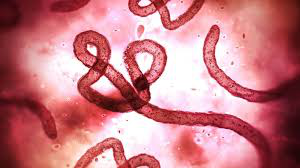Ebola Virus and its post exposure treatment
Ebola virus is also called as Ebola hemorrhagic fever which is caused by a virus called Ebola. These viruses generally spread through the direct body contact with the body fluids of an infected human or animals. This also transmits through the contact of body fluids contaminated in items.
These viruses may develop within 2 and 21 days with the development of symptoms. In the initial stage, the symptoms may cause influenza which re-characterized by fever, weakness, decreased appetite, joint pain, muscular pain. A sore throat and headache. In some cases, the skin may develop a maculopapular rash which causes red flat with small bumps on the skin. Typically, infected people show some blood clotting, bleeding from the mucous membrane and internal and external bleeding may occur.

Generally, people who are infected with Ebola should wear protective clothing include mask, gowns, and goggles. This will reduce the contamination of objects and be spreading of disease by the patents. These infected people should be isolated from others and the medical waste body waste by the person should be disinfected. Education to the public about the risk factors and individual prevention should be done and the person who is handing with the waste should be given with proper knowledge about the maintenance and handling.
At present, there is no licensed vaccine for the cure of Ebola while there are some practices that can reduce its effects such as balancing the patient’s fluids and electrolytes, treating the patient for any complicating infections and maintain the oxygen status and blood pressure. There are some vaccines introduced by WHO such as rVSV-ZEBOV which on injected to the infected patients found that 70- 90% cure and suppress the growth of the virus. There are two more vaccines that are under testing by the NIH health center.
To know more about the infected diseases and vaccines: goo.gl/gx6Gnn
Medical microbiology | Microbiology | microbes| virus| Contamination| medicine |vaccine |diseases |Research
These viruses may develop within 2 and 21 days with the development of symptoms. In the initial stage, the symptoms may cause influenza which re-characterized by fever, weakness, decreased appetite, joint pain, muscular pain. A sore throat and headache. In some cases, the skin may develop a maculopapular rash which causes red flat with small bumps on the skin. Typically, infected people show some blood clotting, bleeding from the mucous membrane and internal and external bleeding may occur.

Generally, people who are infected with Ebola should wear protective clothing include mask, gowns, and goggles. This will reduce the contamination of objects and be spreading of disease by the patents. These infected people should be isolated from others and the medical waste body waste by the person should be disinfected. Education to the public about the risk factors and individual prevention should be done and the person who is handing with the waste should be given with proper knowledge about the maintenance and handling.
At present, there is no licensed vaccine for the cure of Ebola while there are some practices that can reduce its effects such as balancing the patient’s fluids and electrolytes, treating the patient for any complicating infections and maintain the oxygen status and blood pressure. There are some vaccines introduced by WHO such as rVSV-ZEBOV which on injected to the infected patients found that 70- 90% cure and suppress the growth of the virus. There are two more vaccines that are under testing by the NIH health center.
To know more about the infected diseases and vaccines: goo.gl/gx6Gnn
Medical microbiology | Microbiology | microbes| virus| Contamination| medicine |vaccine |diseases |Research
Comments
Post a Comment